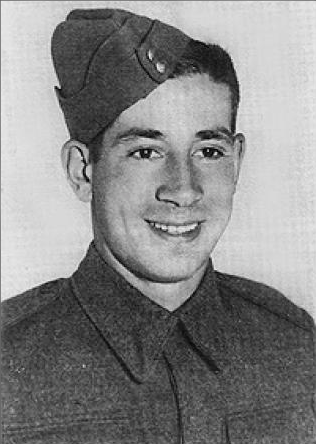test
Charles “Charlie” Henry Byce was born on March 9, 1916. He lived with his mom, Louisa, of the Cree First Nations in Moose Factory, his dad Henry, a non-Indigenous Canadian, and 4 brothers and sisters in the small town of Chapleau, Ontario.
When he was 24, Byce enlisted in the army to fight in World War II and joined the Lake Superior Regiment, an infantry unit. His unit landed on the beaches in Normandy, France in July 1944. From there the Allied Forces made their way towards Germany, through France, Belgium and Holland.

Heroism on the Maas River
In early 1945, Corporal Byce and his unit were patrolling the Maas River. In the middle of the night on January 21, he was one of 24 soldiers sent across the river to bring back a German prisoner so the Allies could get information. This meant that Byce’s group had to go into enemy territory full of German soldiers.
While in enemy territory, Byce’s group was shot at by several groups of Germans. Byce was able to stop them with grenades, which allowed his unit to safely return. He also returned to his regiment with papers from a German killed in the firefight. Those papers helped build a better understanding of what the enemies were doing.
For his bravery, Corporal Byce received the Military Medal. One document supporting his recommendation for the award said:
During this whole action Corporal Byce showed extreme coolness, courage and devotion to duty. Due to his magnificent efforts the patrol was able to reach its objective and withdraw safely with valuable information. This NCO’s aggressive initiative and unselfish gallantry has been an inspiration to all ranks of the unit.
The Hochwald Gap


